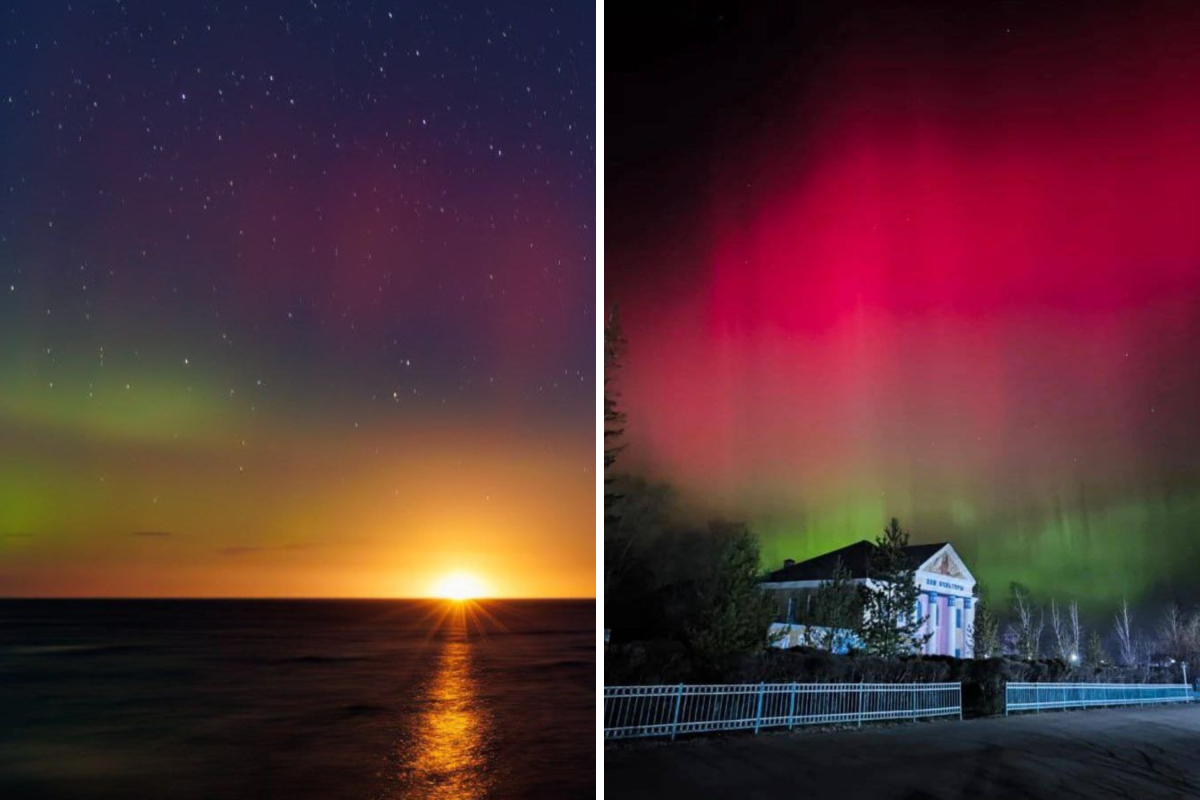Blood
Skies turn blood red as northern lights hit southern Europe
The skies over much of Europe were lit up on Sunday night as far as southern Slovakia, as the northern lights were spotted by stargazers across the continent.
A bright red magnetic storm tinged with green and purple was captured by a meteorological camera near the village of Stanča, near Slovakia’s south-eastern border with Hungary, shortly after 6 p.m. local time (12 p.m. ET). A similar display was caught over Krakow, Poland, seemingly from a plane.
In the U.K., an amateur photographer caught a snap of red bands of light hovering over the ancient Stonehenge prehistoric circle in Salisbury, in the south of England.
“Most of the drive was misty and thick fog,” the photographer wrote on Facebook. “But on arrival it wasn’t too bad so set my camera up and was just happy to see the aurora once more after missing out on the last few storms due to clouds.”
RIA Novosti/Kazakh Government
Red and green glows were seen in places across the rest of the British Isles, with one person sharing an image of their “blissful evening” in Castle Creavie, in the southwest of Scotland.
In the Netherlands, Dutch photographer Rick Bekker captured some faint pink bands arching over several of the country’s iconic windmills in Kinderdijk, a village just outside of Rotterdam. He described the sight as “unprecedentedly beautiful.”
Elsewhere, the government of Kazakhstan posted an image of red and green lights over the nation, but did not specify where. Newsweek approached the Kazakh Ministry of Foreign Affairs via email for comment on Monday.
The Russian news agency RIA Novosti said the meteorological phenomenon had been seen “over almost all” of the nation, sharing images from Kaliningrad, Russia’s exclave in northern Europe, and the rural Perm region to the north of Kazakhstan.
Ongekend fraai #noorderlicht vanavond!, en dat gewoon in eigen land, boven de befaamde molens van #Kinderdijk. Wat een briljante show mochten wij meemaken, als eerste fotograaf ter plaatse, tijdens de meest hevige uitbarsting. Tja, veel beter gaat het niet worden in eigen land
pic.twitter.com/h2VK7QdjGL
— RickB (@Anatidaephbia) November 5, 2023
The northern lights—or aurora borealis—are caused by solar winds interacting with the Earth’s magnetic poles, which is why they typically occur over northern regions such as Scandinavia. A similar phenomenon, aurora australis, occurs around the south pole.
When solar wind particles hit the upper atmosphere, the resulting reaction emits photons of light. Many of the greens and reds recently seen were likely due to interaction with oxygen gas, though these colors can be created with nitrogen as well.
Depending on the viewing point and the intensity of the display, the northern lights can appear as a glow in the sky, or as an arc or ribbon of light. Perhaps the most famous examples are when they form a curtain of light across the sky.
This winter’s auroras are expected to be more prominent than those seen in the past decade, as a higher amount of solar radiation is expected to crash into Earth’s magnetic spheres, making the lights brighter. Scientists have recorded a greater amount of activity on the surface of the sun, with the expected peak in solar activity to come next year.
“Tonight had the strongest Northern Lights I’ve ever seen!” Max Wernerson, a landscape photographer based in Tromso, Norway, wrote. “[I’ve been] chasing them now for nearly 6 years on almost every winter night, but I have never seen the oxygen red as strong to the naked eye before.”
Uncommon Knowledge
Newsweek is committed to challenging conventional wisdom and finding connections in the search for common ground.
Newsweek is committed to challenging conventional wisdom and finding connections in the search for common ground.

